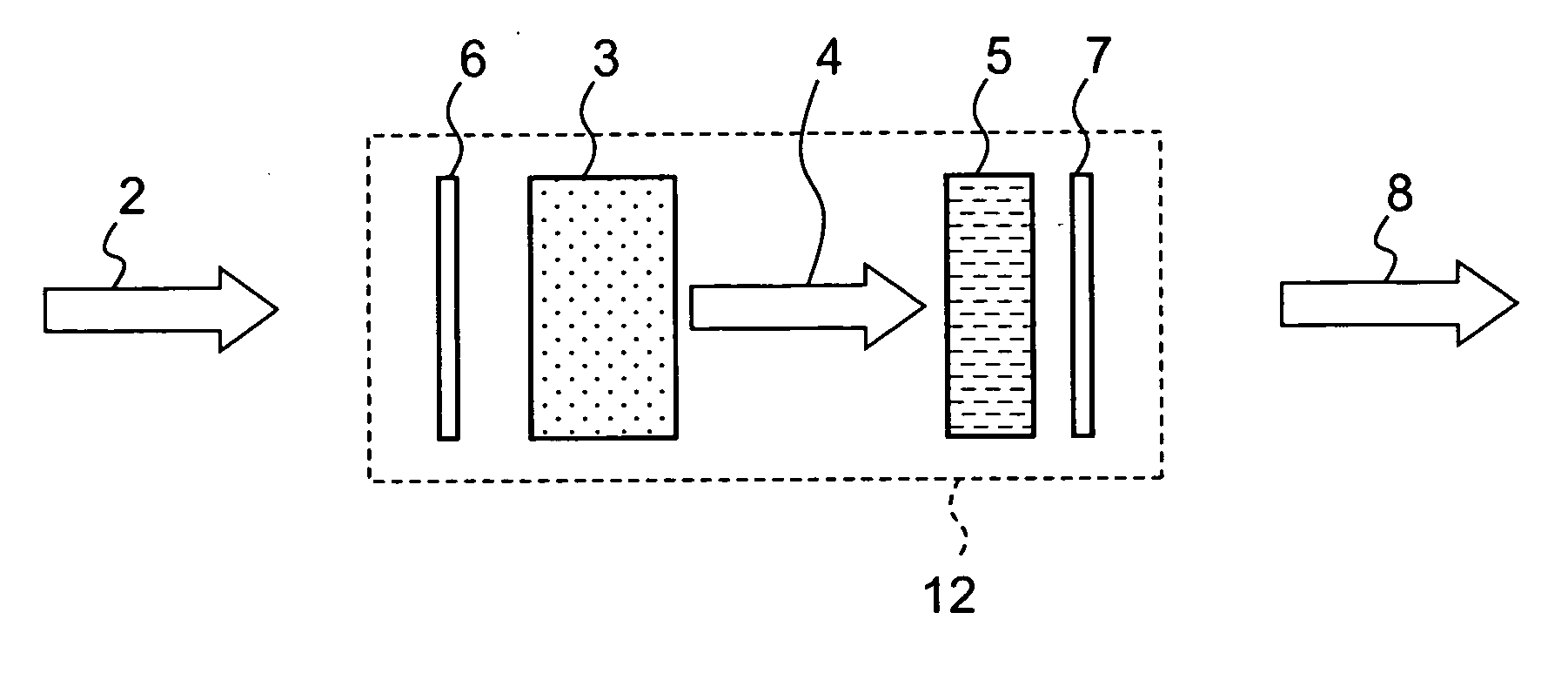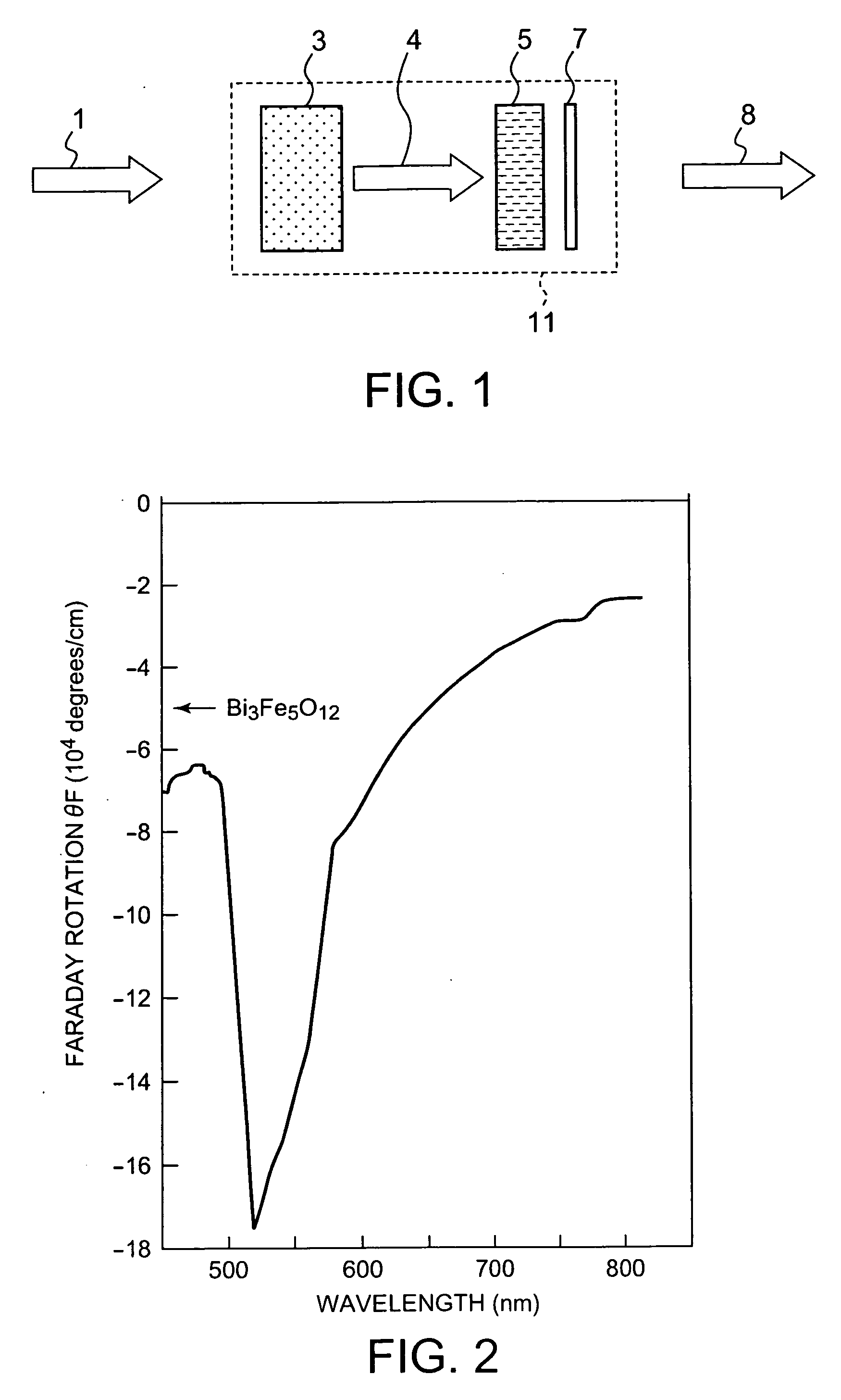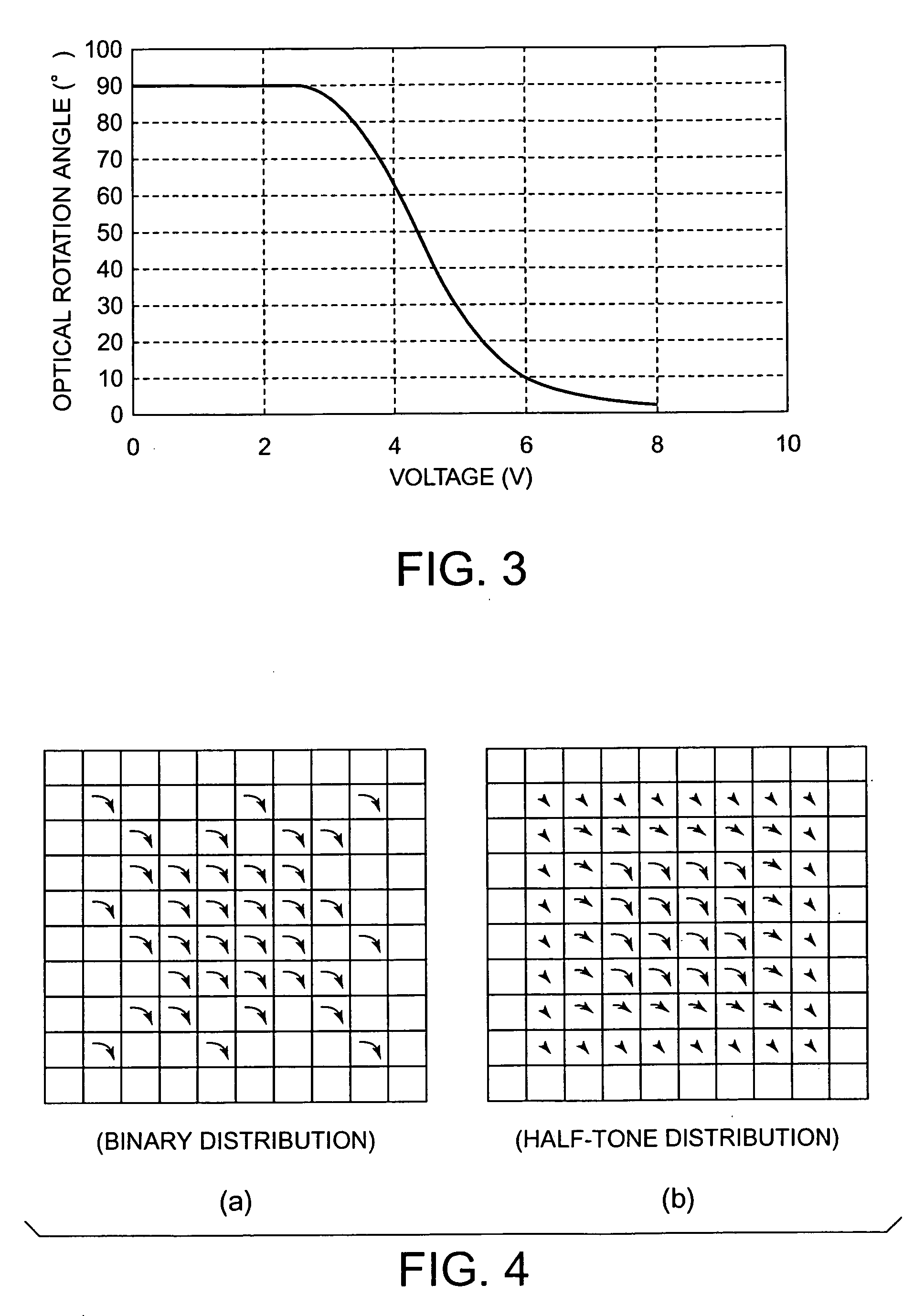Optical control device and optical control method
a control device and optical control technology, applied in the direction of fluorescence/phosphorescence, instruments, polarising elements, etc., can solve the problems of large apparatus, difficult simultaneous control of spatial light intensity distribution and temporal laser beam waveform, and difficulty in changing many kinds of color characteristics
- Summary
- Abstract
- Description
- Claims
- Application Information
AI Technical Summary
Benefits of technology
Problems solved by technology
Method used
Image
Examples
first embodiment
[0119] An optical control system 11 in a first embodiment according to the present invention receives an incident linearly polarized light wave containing a plurality of wavelength components, passes the linearly polarized light wave through an optical rotatory dispersion device to change the polarization plane rotation angles of the wavelength components, passes the linearly polarized light wave through an analyzer, and obtain a light wave containing wavelength components respectively having different spatial light intensity distributions by a spatial light modulator including a polarization plane rotator, such as a liquid crystal.
[0120] Referring to FIG. 1, the optical control system 11 includes a wavelength dispersion type optical rotatory device 3, an analyzer 7 and a spatial light modulator 5 capable of giving an optional polarization angle spatial distribution to the polarization plane of the incident light wave.
[0121] The analyzer 7 is an optical element that transmits a po...
second embodiment
[0162] An optical control system 13 in a second embodiment according to the present invention is provided with a wavelength phase modulator 17 in addition to components corresponding to those of the optical control system 11. The optical control system 13 adjusts, in addition to spatial light intensity distributions of wavelength components, the temporal waveform or phases of wavelength components of an incident light wave to emit a desired outgoing light wave.
[0163] Referring to FIG. 19 schematically showing the optical control system 13 in the second embodiment, the optical control system 13 adjusts the phases of the wavelength components of an incident linearly polarized light wave 1 so as to meet a predetermined relation by the wavelength phase modulator 17, changes the polarization plane rotation angles of the wavelength components by an azimuth rotator 3 having an optical rotatory dispersion characteristic, and then passes the incident linearly polarized light wave 1 processe...
third embodiment
[0177] An optical control system 51 in a third embodiment according to the present invention forms a desired far field pattern by adjusting a near field phase distribution by using a spatial light modulator capable of controlling spatial optical phase to achieve laser process control.
[0178] Referring to FIG. 23 showing the optical control system 51, the optical control system 51 has a wavelength dispersion type optical rotatory device 3 capable of changing optical rotation angle according to wavelength and a spatial optical phase modulator 52. An incident light wave 1 passes through the optical rotatory device 3 and the spatial optical phase modulator 52 in that order.
[0179] The spatial optical phase modulator 52 produces an outgoing light wave 53 differing in the ratio between a polarized component to be subjected to spatial optical phase modulation and a polarized component not to be subjected to spatial optical phase modulation from a light wave having a different polarization ...
PUM
| Property | Measurement | Unit |
|---|---|---|
| velocity | aaaaa | aaaaa |
| wavelength | aaaaa | aaaaa |
| wavelength | aaaaa | aaaaa |
Abstract
Description
Claims
Application Information
 Login to View More
Login to View More - R&D
- Intellectual Property
- Life Sciences
- Materials
- Tech Scout
- Unparalleled Data Quality
- Higher Quality Content
- 60% Fewer Hallucinations
Browse by: Latest US Patents, China's latest patents, Technical Efficacy Thesaurus, Application Domain, Technology Topic, Popular Technical Reports.
© 2025 PatSnap. All rights reserved.Legal|Privacy policy|Modern Slavery Act Transparency Statement|Sitemap|About US| Contact US: help@patsnap.com



